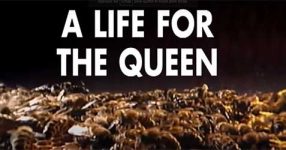Nature is a stage where survival hinges on performance, and few actors play their roles quite like mimics. This fascinating phenomenon sees one organism evolve to resemble another, blurring the lines between predator and prey, friend and foe. But mimicry isn’t just a costume party; it’s a cunning survival strategy honed over millennia.
Nature’s Copycats: Unmasking the Different Faces of Mimicry
Mimicry isn’t a one-size-fits-all act. There are different strategies for different roles, each a testament to the ingenuity of evolution.
- Wearing Another’s Cloak: Batesian Mimicry
Imagine a harmless insect dressed in the vibrant stripes of a venomous one. That’s Batesian mimicry, where the weak borrow the armor of the strong. Predators learn to avoid the distasteful model, granting the mimic valuable protection. Think Viceroy butterflies mimicking Monarchs, hoverflies buzzing like bees – nature’s clever disguises in action.
- Turning the Tables: Aggressive Mimicry
Not all mimics play victim. Some, like the anglerfish with its bioluminescent lure, turn the tables on predators. By mimicking harmless prey, they lure unsuspecting victims within striking distance. It’s a masterclass in deception, where predators become the hunted.
- Whispers in the Darkness: Beyond Appearances
Mimicry isn’t just about looks. Some species, like fireflies, mimic the mating signals of others, luring them into a deadly trap. It’s a sensory sleight of hand, proving that mimicry can be as much about sound and scent as it is about appearance.
Evolution’s Arms Race: Mimics and Models in a Constant Dance
The world of mimicry is never static. As mimics become more convincing, models evolve adaptations to avoid mistaken identity. It’s a constant evolutionary dance, a push and pull between predator and prey, deceiver and deceived. This arms race drives biodiversity, pushing species to ever-greater heights of adaptation.
Mimicry: A Window into Evolution’s Grand Design
Studying mimicry isn’t just about marveling at nature’s trickery; it’s about understanding the very mechanisms of evolution. Mimicry showcases natural selection in action, revealing how species adapt to survive and thrive in a competitive world. It’s a testament to the power of adaptation, a reminder that evolution’s paintbrush can paint the most breathtaking and unexpected creations.
So next time you see a butterfly with suspicious stripes, or hear a familiar chirp that sends shivers down your spine, remember: you’re witnessing a masterclass in mimicry, a breathtaking performance in the grand theater of life.












